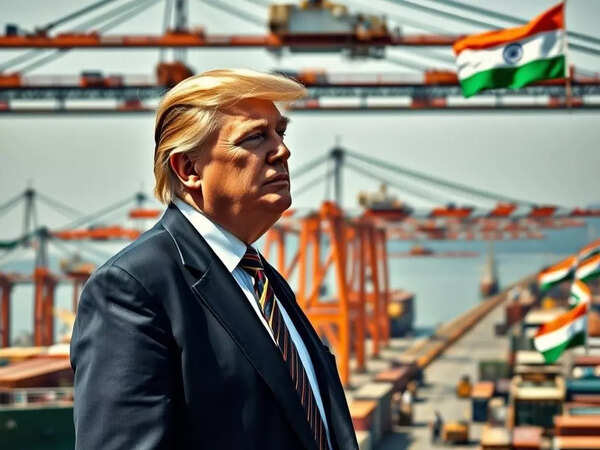By Subrata Majumder
With Trump’s tariff war escalating woes to China, a new plank is established for India to be the hub for global supply chain. Caught in the crossfire of highest hike in tariff by 245 percent on import from China by Trump administration, China will lose its hegemony in supply chain. Eventually, new opportunity will open up for India to bid challenge to China as well as Vietnam – the extension of Chinese workshop.
The confidence built up for India to be alternative to China and Vietnam for supply chain is evident from the recent trend of India’s exports to USA. USA emerged the biggest destination for India’s exports of electronic goods and auto parts. Exports of electronic goods to USA boomed to US$ 10.5 billion in 2023-24, from US$ 1.6 billion in 2018-19, registering a growth by 593.3 percent and that of auto components, it boosted to 1.9 billion in 2023-24, from US$1.2 billion in 2018-19, recording a growth by 46.6 percent. In terms shares, USA accounted for 33.8 percent of India’s total exports of electronic goods and 24.2 percent of auto component exports in 2023-24.
Factors attributed to these growth were the fall out of Trump’s tariff war against China in his first term of Presidency, coupled with fall out of COVID 19 pandemic. Walmart has shifted focus from importing goods from China to increasingly partnership and imports from India. Reuter reported “Walmart was importing more goods to USA from India, and reducing its dependence on China as it looks cut costs and diversify its supply chain”.
The telecom CISCO has also made decision to start manufacturing in India, stating “fueled by rapidly growing digital economy, India is focal point of innovation and business for CISCO”. With the onset of COVID 19, a dramatic change was drawn in the global landscape of manufacturing for supply chain. China, which topped in manufacturing, receded in its hegemony. Foreign investors were flying out of China and shifted to South East countries. Eventually, Vietnam emerged an alternative for China.
Given the changes in global landscape for manufacturing of supply chain, Indian policy makers refurbished Make in India. They lend a second thought in the concept and shifted focus on supply chain manufacturing. Eventually, PLI (Production Link Incentive) scheme was overhauled. It expanded with more doses of incentives. The expanded PLI worked well. Manufacturing boomed.
Electronic sector experienced a galloping growth in India. Production reached US $ 101 billion in 2023-24, from US $ 48 billion in 2017-18. It comprised of US$ 86 billion worth finished products and US$ 15 billion worth electronic components. Alongside, India pitched a faster growth in auto components industry. It has shown steady growth by 9.8 percent in 2023-24. Imports too increased. But, the industry maintained a surplus trade balance between exports and imports.
No doubt, China was the biggest supplier of components and intermediates for supply chain manufacturing in India. But, the dependence on China was receding with the growth in domestic production. Shares of imports of electronic goods from China declined to 37.2 percent in 2023-24, from 41.9 percent in 2020-21 and that of auto components decelerated to 23.4 per cent in 2023-24 from 30.3 percent in 2020-21.
According to Nikkei Asia, “India can be the bigger winner in the supply chain shift from China”. Till now India does not have manufacturing plant for semiconductor devices. Recently, three companies have decided to manufacture semiconductor in India. They are Micron Technology, USA, Renesas Electronics, Japan, in partnership with Star Microtech, Thailand and Tata Electronics Pvt Ltd, in partnership with Powerchip Semiconductor Manufacturing Corporation, Thailand (PSMC).
In the realm of China losing its strength in global power for supply chain, Vietnam emerged alternative to China. Vietnam emerged the 6th biggest exporter to USA. Vietnam’s rising strength to dump in American market relied on Chinese imports.
China was the biggest stake holder in value addition of Vietnamese made goods, meant for export to USA. According to a study, value addition by Chinese materials in Vietnamese made goods was nearly 30.4 percent in 2022. This demonstrates that more than one-third of value addition in Vietnamese goods exported to USA were by Chinese supply chain.
It is argued that success of Vietnam in American market was mainly due to backdoor entry of Chinese exports to USA to avoid high USA tariff imposed on China during the first term of Trump’s Presidency.
In the bid of Trump’s vehement challenge to tariff offenders, a new opportunity has opened for India to emerge alternative to Vietnam in the global supply chain. Vietnam has been abused as one of the biggest offenders, inviting second highest hike in USA import tariff. It is accused as extension of Chinese workshop.
To this end, a complimentary partnership with China bode well for India to capitalize supply chain market in USA, incurring lower tariff hike. At present, Chinese investment in India is restricted and barred from automatic approval, owing to security concerns. (IPA Service)

 Tejashvi Yadav Is The De Facto Chief Minister Face Of INDIA Bloc For Bihar Assembly Polls
Tejashvi Yadav Is The De Facto Chief Minister Face Of INDIA Bloc For Bihar Assembly Polls 